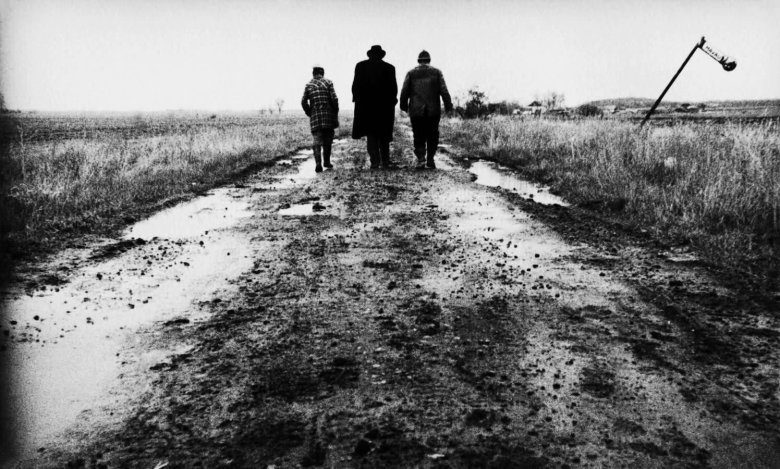
At the Baffler website, film critic Nick Pinkerton writes about the curious rewards of “durational epics” like Béla Tarr’s seven-hour film Sátántangó and Jacques Rivette’s thirteen-hour Out 1: Noli Me Tangere. Pinkerton also observes that compared to the time we spend with novels or even Netflix TV shows, submitting oneself to the rigors of long-ass films isn’t as crazy as it seems. Check out an excerpt from the piece below.
The durational film has its own ideological aspect; faced with a distribution system that has standardized runtimes, within a certain range that can maximize daily showtimes and therefore profits, these are films that opt out, effectively curtailing their commercial possibilities. They are follies, impractical in the extreme—witness Peter Watkins’s Resan (The Journey) (1987), ostensibly a work designed to awaken viewers to the horrors of nuclear warfare, though at over fourteen hours unlikely to reach more than a tiny few.
Many moving image-based durational epics, made without possibility of traditional theatrical distribution, bypass the theater for the gallery’s white box: examples include 24 Hour Psycho (1993), Douglas Gordon’s daylong two-frames-per-second taffy-pull of Alfred Hitchock’s Psycho (1960), or Christian Marclay’s The Clock (2010). These Everest-like peaks can in theory be scaled, unlike multi-screen installation works that are by their nature incompletable, presenting as they do to a spectator an inexhaustible number of vantages, of entrance and exit points—take for example Albert Serra’s 737-minute Singularity , or Apichatpong Weerasethakul’s 2009’s Primitive , listed by the Tate as “duration variable: 1 min – 29 hours, 34 min.”
Image: Still from Béla Tarr’s 1994 film Sátántangó. Via IndieWire.